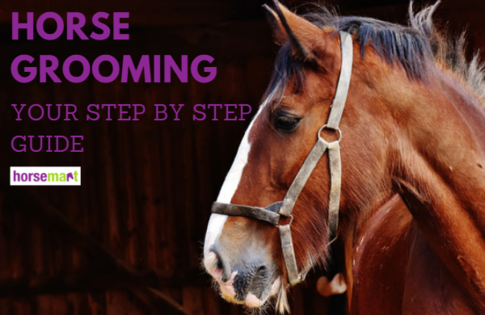
Are You & Your Horse Ready For Bitting Advice? The Steps You Need To Consider First
Equestrian Advice & Guides All Disciplines
Build your business profile for FREE and expose your services to thousands of potential clients!
Create my profile now!
Horse Grooming is extremely beneficial for both you and your horse. Grooming increases sociability between the both of you as you become used to each other's presence. Grooming also encourages good blood circulation and gives you the chance to check over your horse's body for any external wounds, especially the parts of the body that will come into contact with tack. Stable horses should be groomed on a regular basis, always before and after a ride. However, horses that live more naturally will do some of the job themselves by rubbing against trees and fences and rolling on the floor.
Some people prefer to clip their horse, if you are one of them, head over to our horse clipping, tips and advice page.

Although your horse may be trained to stand still, many horses will feel the need to shift and move their feet whilst they are being groomed. To ensure your horse is kept in place, tie the lead rope above the height of the horse's withers (shoulder blades) and use a quick release knot to secure him to a post or ask a friend/colleague to hold the rope.
Always use a quick release knot in case your horse gets spooked and tries to escape by pulling in a backward motion. This is highly dangerous for both of you. In case of an emergency, you should keep a Marlinspike in your grooming kit, this can loosen knots and cut through rope.
Heres how to tie a quick release knot.
STEP 2 - Pick your horse’s hooves
Start by standing next to your horse facing in the opposite direction and have your hoof pick in the hand that is furthest away from the horse. To pick up your horses foot, run your hand, that’s closest to the horse, down the front of its leg until you a cupping your horse’s hoof in your hand. At the same time lean gently into your horse, encouraging them to shift their weight onto the other side. This will cause your horse to pick up its foot. Once the hoof is up, keep it supported securely in your hand.
Using the hoof pick, start at the back of the foot and pick carefully towards the toe, removing all rocks and dirt. Clean the grooves on either side of the V-shaped part of the hoof, also known as the frog. Do not pick the horses frog or dig deep into the grooves.
If you are doing this for the first time or you are unsure, ask someone experienced to help you.
Get your hoof pick here with us at equine superstore.
Work from ear to tail without currying the head, mane, tail and lower legs, being extremely careful over bony areas. Move your comb along the horse's coat in small circular motions in the opposite direction to the hair growth. Don’t apply too much pressure but be firm enough to lift the dirt from the coat. Whilst circling the brush you’ll start to see grains of dirt that have risen up from the horse's skin. This loosened dirt will now be much easier to brush off.
We highly recommend this selection of curry combs.
A Hard brush or Dandy brush as some like to call it, is a hard bristled brush used to take off the hair and dirt brought to the surface by the curry comb. Don’t use this brush on your horses head, mane, tail or lower legs. Start along the neck and work your way down and along the body using short straight flicking motions to ‘flick’ off the debris.
Get your dandy brush here.
The Soft brush also known as the Body brush can be used on all areas of the horse due to its softer bristles. This brush is used to finish off your horse's coat and give it a softened, shiny feel. It’s also great for brushing out the mane and the tail.
You need to use this brush in long, smooth strokes, starting at the head and working your way along the body and down the legs. Use quicker sweeping motions on the lower leg to remove dirt where it was too sensitive for the Hard brush. It’s also useful to use along the bridge of the nose and the cheeks but be careful to avoid the end of the nose and the eyes as these are all very sensitive areas. Some people prefer to use a separate brush for the face, which is just a smaller version, called a Face brush.
Choose from these great body brushes.
Using a damp sponge or cloth, gently wipe your horse’s eyes, and clean out the nose.
You will also need to clean the dock area beneath the tail. Be sure to use a different sponge or cloth for this part and be very gentle as this is a very sensitive area.
When brushing the tail make sure you stand to the side of the horse, this way if the horse kicks you are in a much safer position.
First, separate the worst of the tangles with your fingers. With a wide tooth comb or brush, detangle the rest of the mane and tail. Work your way through by taking small sections at a time holding the top of the section in one hand and brushing through with the other to avoid any tugging.
Flies can be a nuisance to horses, especially in the summer so you may want to spray your horse with fly spray to avoid them spreading infection or even biting and causing your horse pain. Spray the solution over the horse being careful to avoid the face.

